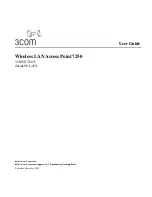
102
●
USB
— Universal Serial Bus. A connection type for computing device peripherals such as a printer,
mobile modem, etc.
●
USB Port Types
— The USB ports on computers and hubs have a rectangular Type A socket, and
peripheral devices have a cable with a Type A plug. Peripherals that do not have an attached cable
have a square Type B socket on the device and a separate cable with a Type A and Type B plug.
●
VNC
— Virtual Network Computing. A graphical desktop sharing system that uses the RFB protocol to
remotely control another computer.
●
VPN
— Virtual Private Network. A secure private network that runs over the public Internet.
Commonly used to connect to an office network from elsewhere.
●
VPN Passthrough
— A feature that allows a client to connect to a VPN server.
●
WAN
— Wide Area Network. A public network that extends beyond architectural, geographical, or
political boundaries (unlike a LAN, which is usually a private network located within a room, building,
or other limited area).
●
WCDMA
— Wideband Code-Division Multiple Access. A 3G mobile wireless technology that promises
much higher data speeds to mobile and portable wireless devices. Another name for UMTS.
●
WEP
— Wired Equivalent Privacy. An IEEE standard security protocol for 802.11 networks. Superseded
by WPA and WPA2.
●
WiFi
— Wireless Fidelity. Any system that uses the 802.11 standard developed and released in 1997 by
the IEEE (Institute of Electrical and Electronics Engineers).
●
WiFi Client
— A wireless device that connects to the Internet via WiFi.
●
WLAN
— WiFi LAN. A typically low-power network that transmits a wireless signal over a span of a few
hundred feet and usually only to stationary devices.
●
WPA/WPA2
— WiFi Protected Access. A security protocol for wireless 802.11 networks from the WiFi
Alliance.
●
WWAN
— Wireless Wide Area Network. Wireless network technologies deployed over a large
geographical area to a large number of users (see WLAN). This service is usually provided through
cellular providers. WWAN connectivity allows a user with a laptop and a WWAN device to surf the
Internet, check email, or connect to a virtual private network (VPN) from anywhere within the regional
boundaries of the cellular service.

































